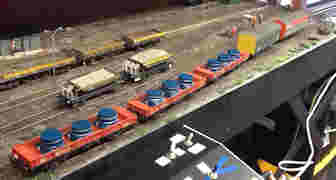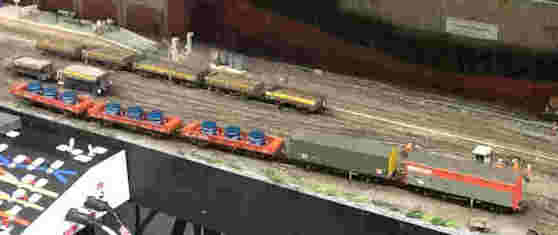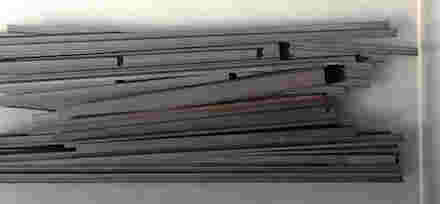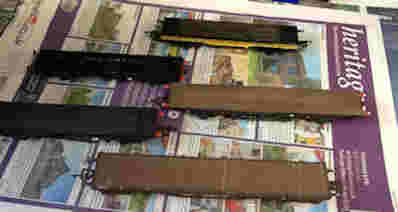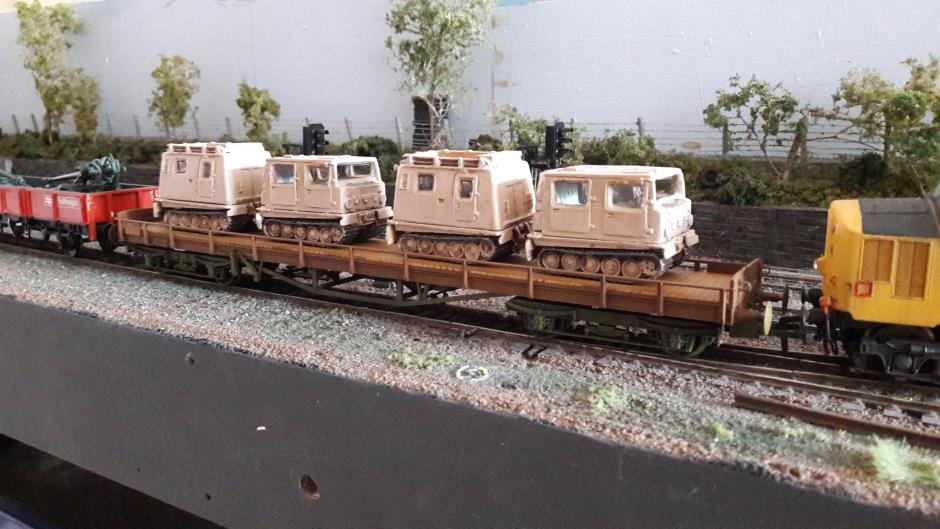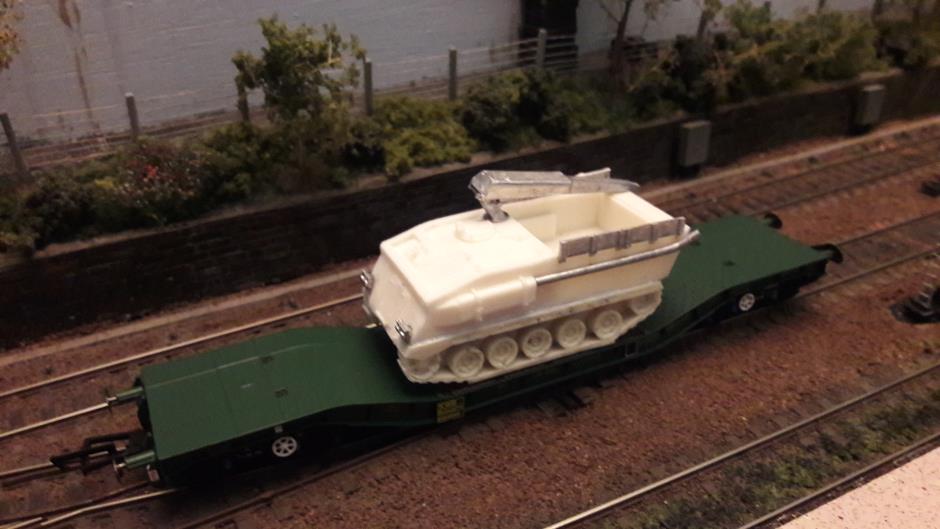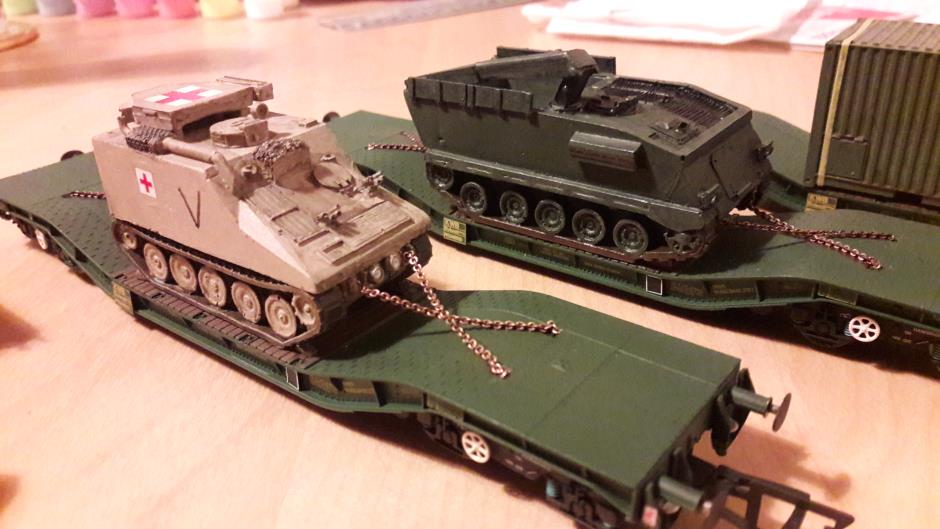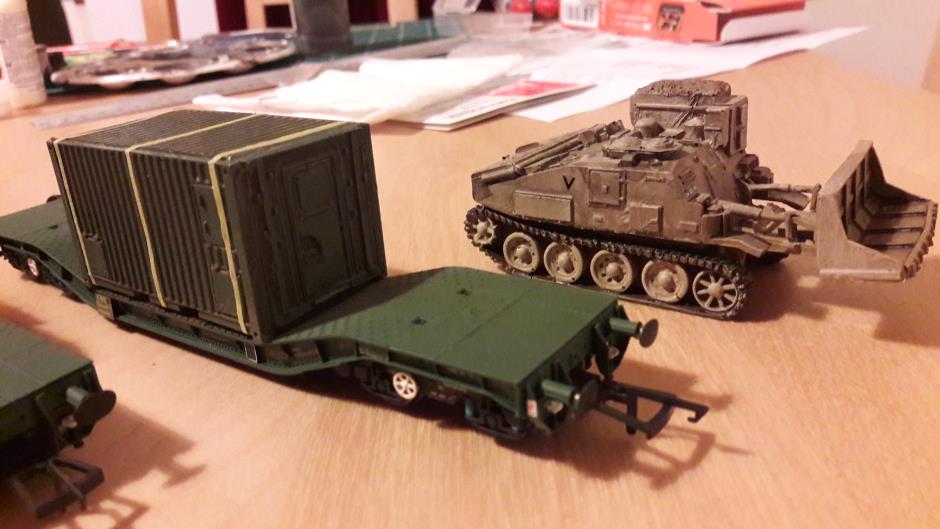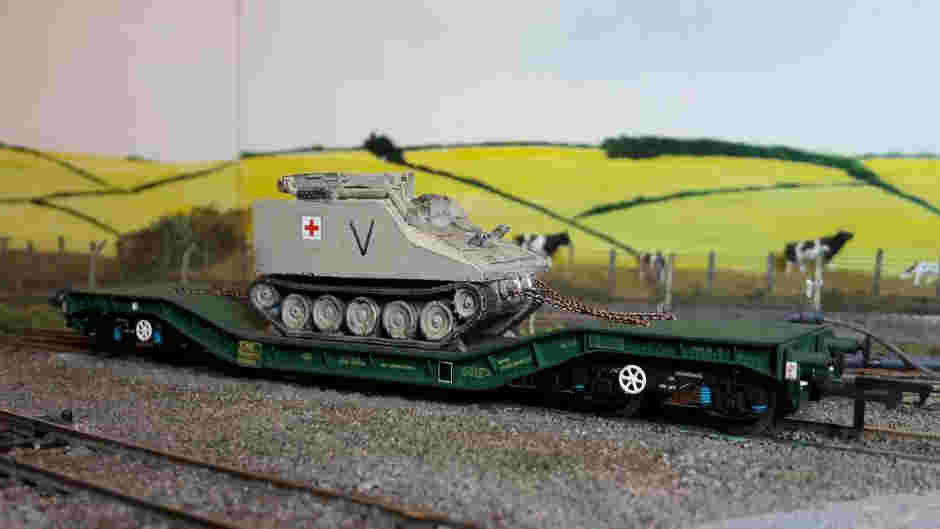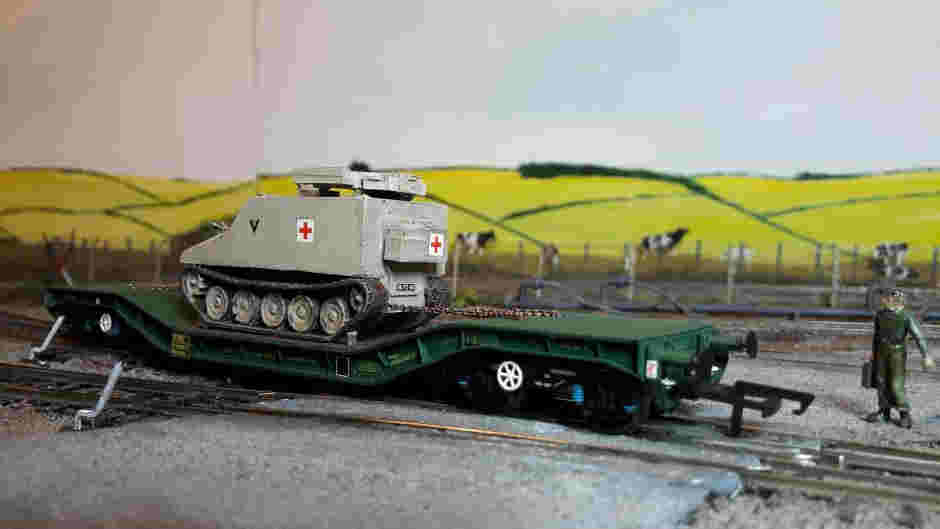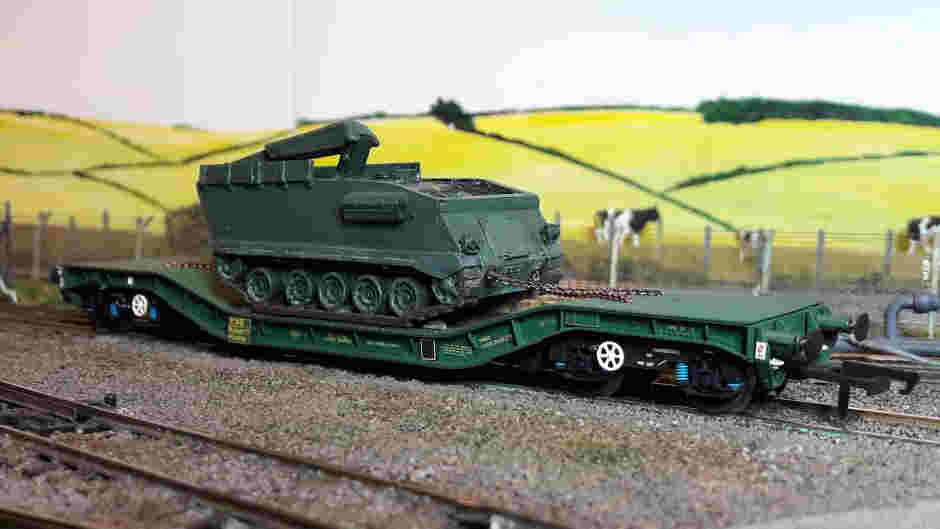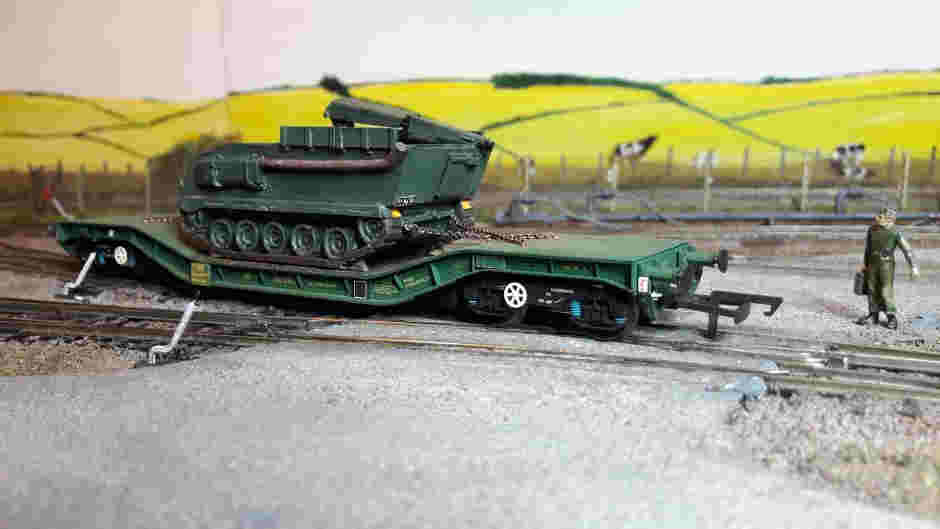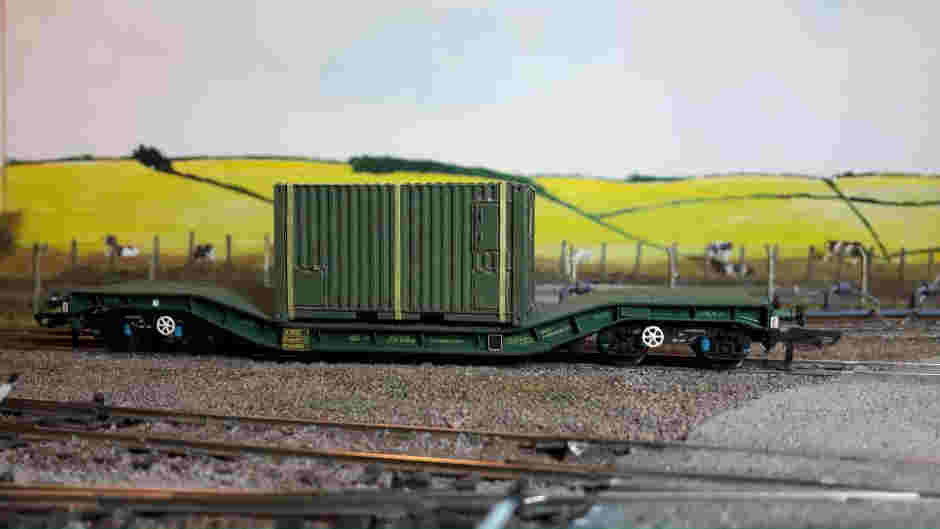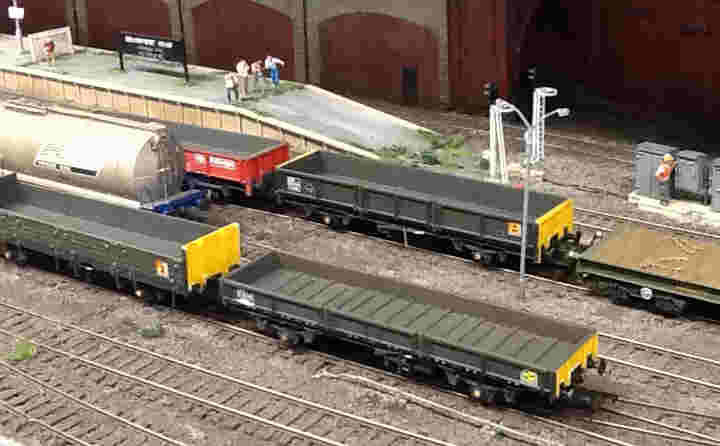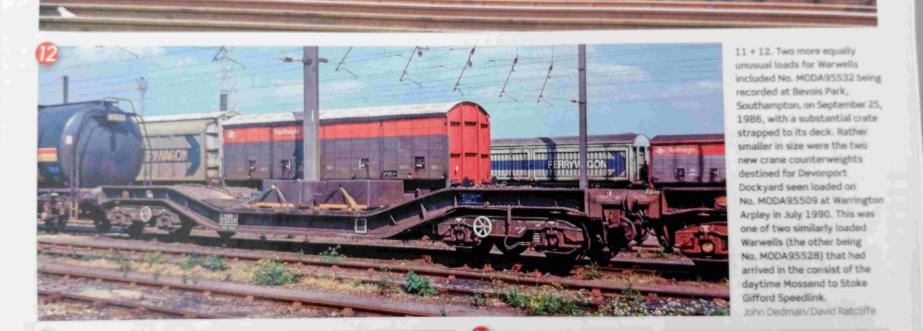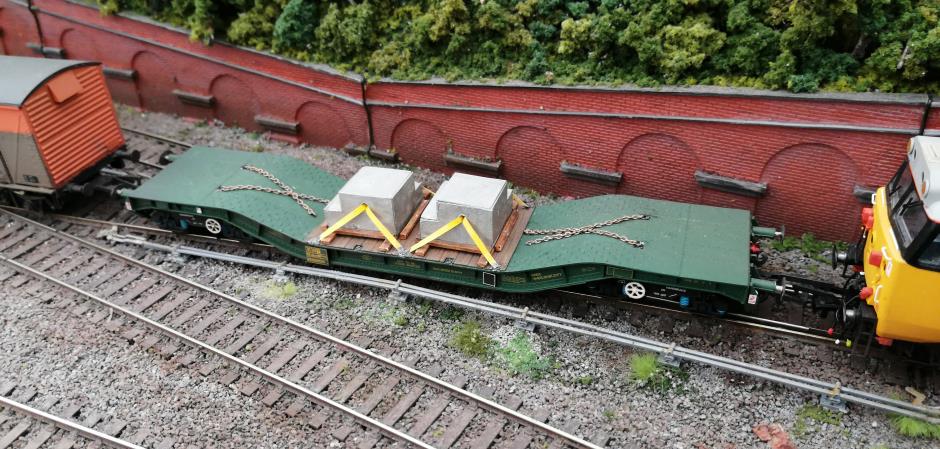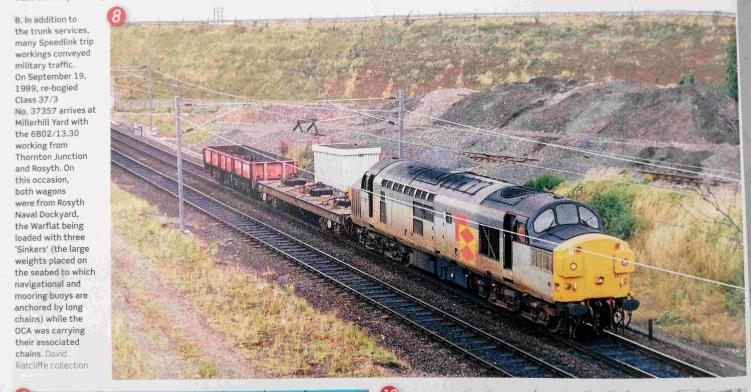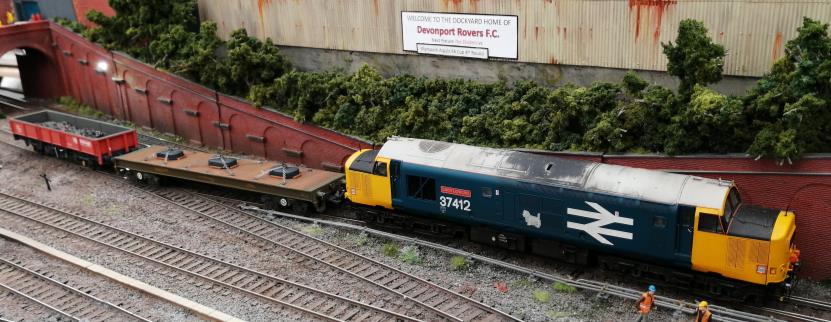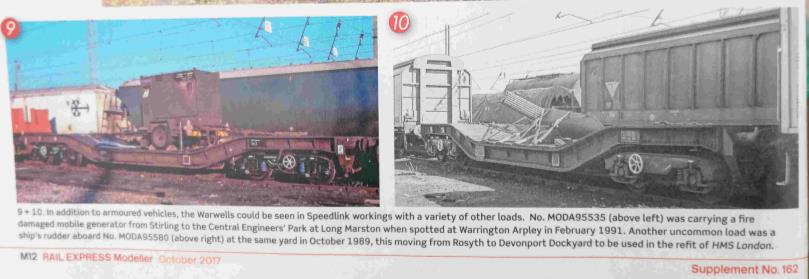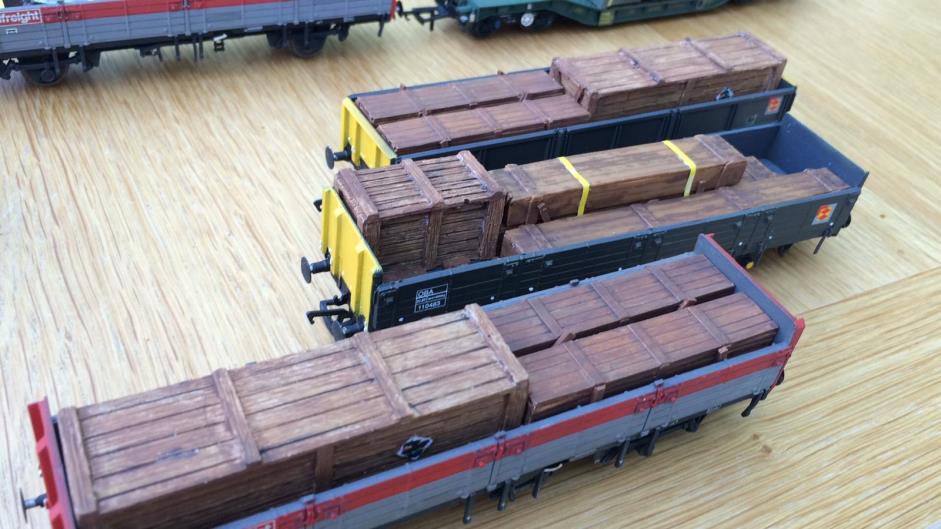This page shows ongoing projects currently on the workbench. Updates will be provided over time as work and time permits. If you have any questions or further information, please let us know via our ‘Contact us’ section.
Happened to pick up two Bachmann Ciba-Giegy resin tankers. Ok I appreciate there are issues with the underframe and the walkway is generic, but the model is good basis and the livery looks good.
Looking at the resin fleet, I noticed that most tankers had single ladders not the twin as on the Bachmann model. S kits do a single walkway etch, but in an attempt to keep the original Bachmann livery (and my S kits etch is ear marked for something else!!) a modification as originally documented by Nigel Burkin was done. Essentially you remove the Bachmann walkway and replace with etch ladders and wire handrails.
The 2 tankers were then weathered as per photos on Paul Bartlett's excellent site.
The following pictures show the mods and final wagons.
For McDovington Camp's appearance at Nailsea the pressure is on to get some "definitely" Scottish wagons into operation.......that also made it down south!!!
One such flow was molasses, of which there was a major Scottish internal flow from Greenock amongst others to Menstrie. The main wagons on this were a TTA that looked somewhat like the old Airfix tanker kit, with a very swanky livery (when clean). These were supplemented by TTBs, like the Bachmann Methanol tank (livery wise!)
Flows of molasses on a seasonal basis could be seen in Bristol.........so why not the odd Speedlink load to or perhaps even "from" the docks at Cattewater?????
To work....essentially you have to remove the methanol related decals from your tanker. This was done using the Clapham favourite........T-cut and a cocktail stick.
And then it's heavy weathering as the only colour photo I have seen of a TTB was on RailScot at Greenock and the tanker was not the cleanest should we say......
Another wagon for the North and the South West......perhaps a TTA to accompany it in the future!!
.
A new train is about to take to the rails of Devonport Road, a tinplate working from Trostre in South Wales to the Metal Box factory in Plymouth. The traction will be a South Wales Class 37 which also collects scrap wagons from Exeter...in the stock box and will include a failure...watch this space!!!
But for the wagons???? A mixture will eventually be available including Black Adder scrap wagons in various guises, VAA/VBA wagons and SHAs....a conversion of the SPA for carrying tinplate coil.
The research for this later wagon has proved problematic, but here are the results so far:
Note the boxes at each end for coil covers and the guide spigots for locating the coils which are always covered when carried in SHAs....and now for experiments in coil production.....
A finished coil awaits strapping.
However any further information on the movement of tinplate or SHA wagons would be appreciated.
The scrap train for Devonport Road finally got finished. The short train comprises 5 wagons, 3 SSAs of both vehicle types (2 Bachmann, 1 Cambrian kit) an HSA, former coal wagon and one of the three SJA wagons. The latter is an easy conversion from a Bacmann MEA wagon, just add two side doors from plasticard and access ladders both ends.
Here's the finished train and some detail shots of the SJA :
This is a straightforward modification with the addition of spigots down the wagon centre line to aid coil loading and the addition of chests at the wagon ends. These were used to store the blue plastic sheets used to wrap the coils when they were transported in the open, so to speak, in SHAs.
Tinplate coil was also carried in VBA and VAA wagons, a pair of which can also be seen in the photos.
These wagons replaced VCA wagons originally used on this traffic, it is thought due to issues with the doors and coil loading with the VCA design.
The VAA/VBA and SHA wagons, along with some 'black adder' scrap wagons, will form a train supposedly working to Metal Box in Plymouth from Trostre works in South Wales and will be hauled on Devonport Road by a Cardiff Metals 37/7 or 37/9.
Having bought some BDAs to convert into log carriers, I realised that I prefer heavy metal to wood wind
.....and so following the scrap, then the tinplate, it was time for sections
.....but they're too big for a BDA.....barriers to the rescue
A taster for new metals trains/wagons under construction.......rather than a symphony of destruction
With Oxford Rail releasing their Carflat and Hattons their warwell, some examples just had to be added to the Dovington Camp fleet ahead of the National Festival of Railway Modelling in Peterborough. They will also feature on Llanteulyddog and, possibly, even on Devonport Road.
The first up was the Carflat. The Rail Express Modeller's guide to military traffic from a few years ago contained a photo of two BV206 All Terrain Vehicles being transported by Carflat, all tied down with blue nylon rope in addition to the standard chocs. As I had two BW Models' white metal kits already built but in unfinished white/black paintwork (it just didn't look right!), these were brought up to date. Rather than chosing the green versions in the picture I was aware that they had been hastily repainted in desert sand for the first Gulf War. As Dovington is set at that time, desert sand it was. No changes were made to the carflat other than some additional weathering.
So, to the warwells, three were purchased, along with some appropriate kits from S and S Models in Burnham on Sea. I now know why I had not seen the Combat Engineers Tractor being transported by rail - it is just too big to remain in gauge - oh well, another vehicle for use on the depot. So, two vehicles and something else then ...
The first was an FV434 REME vehicle, the second a Samaritan CVRT based ambulance. But what for the other? Running empty was one option, but that seemed a bit of a cop out. So, a containerised kitchen/workshop unit was strapped down, as per a photo in the 2017 Rail Express Modeller's guide to military traffic.
A number of years ago we obtained a number of Cambrian kits that had been poorly painted and in need of some TLC....here they are stripped, first stage of their makeover.
The OCA, SPA and OBA have now been completely resprayed into Railfreight Distribution dark grey livery with yellow ends and the various missing parts like brake gear, buffers and door bangers replaced.
The wagons are seen in the sidings on Devonport Road and will be used on this and Dovington Camp layouts at future shows.
Just to prove if a wagon is well made and runs well, a bad paint job should not put you off.
So to work, and in to play came our Silhouette Cutter. Using the pictures in the article we scaled the various components with the relevant wagons and drew them up on the CAD program.
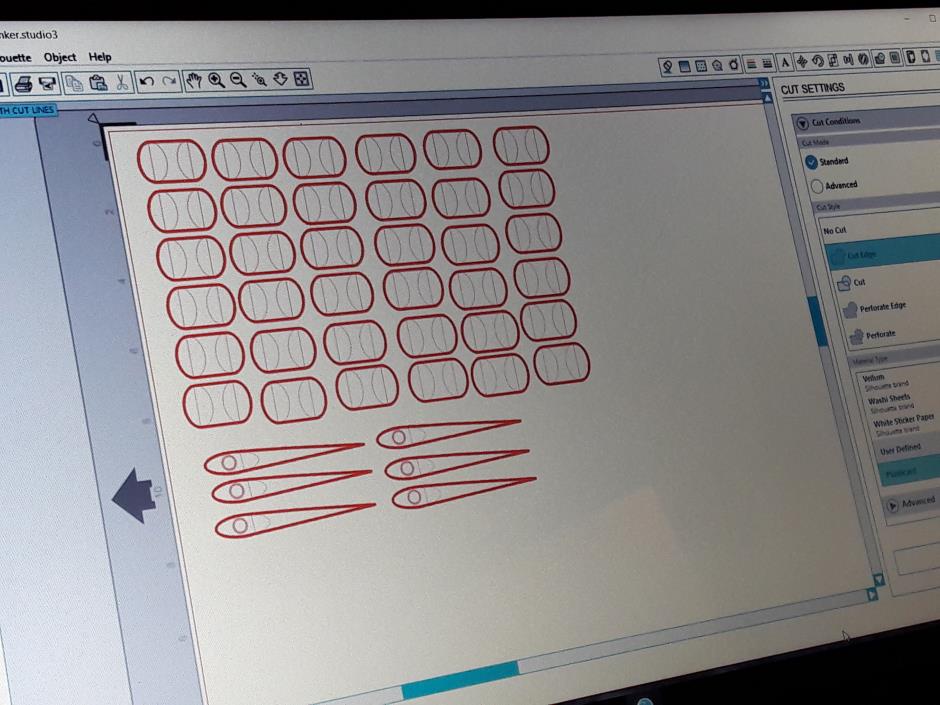 The cut file or the sinkers and rudder formers
The cut file or the sinkers and rudder formers
Test prints were made and tried as loads on the wagons. Once satisfied a final print was made. The cutter makes a flat part but the loads are essentially “blocks“, and so they were made up using layers of plasticard or laminates of plasticard around cut formers. The final thing to do with these loads was to represent the chocking and strapping which are very clearly visible. The chocks are pieces of plasticard and the strapping is either plastic tape or fine chain.
Counter weights:
Sinkers & chains
HMS London's rudder:
We then came upon a new range of ship parts being sold by Squires. Amongst these was a series of anchors. A Google search for pictures of HMS London revealed she had one main anchor and an on board spare. Again a scaling of the product with the ship pictures (the doors!!) showed that two anchors of the correct size would fit into an OBA and so another load was created.
HMS London's anchors:
We have previously posted about various open wagons that we were refurbishing, namely SPA, OBA and OCAs. They all looked very empty when done🙁. In the aforementioned Rail Express was another article showing various loads you could put into air braked opens......of these packing cases were one option. Now in dockyards various components for engines, drive shafts etc come in packing cases and so various plasticky looking ones were obtained. They were all painted in various wood tones to vastly improve their appearance and placed in different combinations into the opens. Again packing was placed around them to hold them in place as per prototype operations. Then a crisis of confidence.....should these loads all be sheeted not open???? But just as this looked like it could be an issue, a number of pictures surfaced showing such loads unsheathed, and, I happened to be at a plant where a new drive shaft and related parts were bring delivered by a number of lorry loads. Each lorry load was a different packing case, all unsheeted.....so ours stayed as they are.
